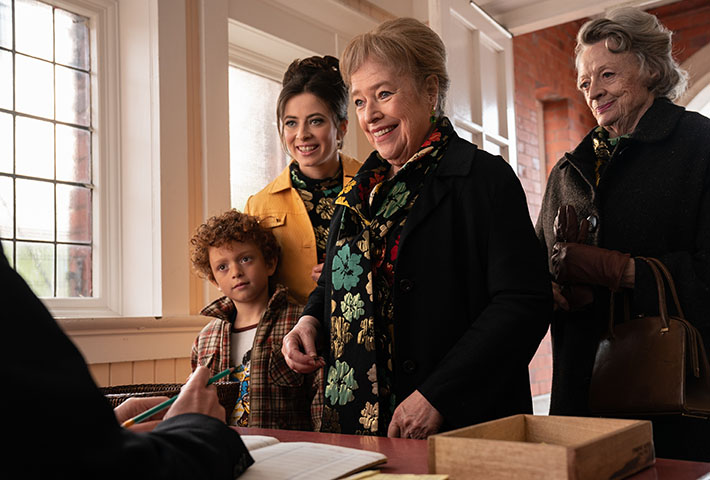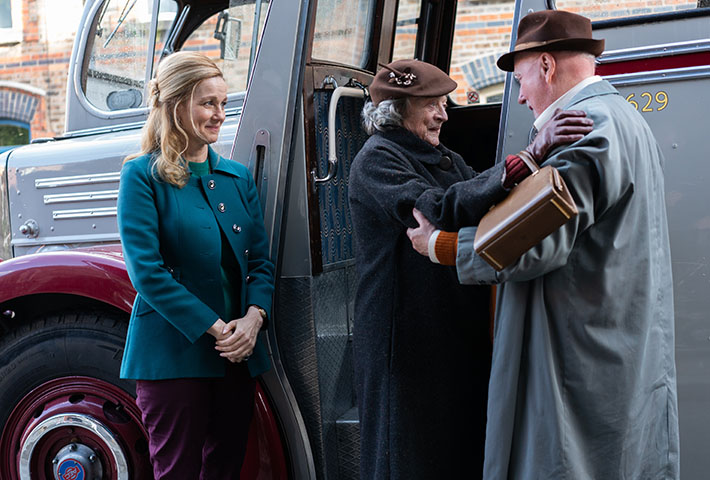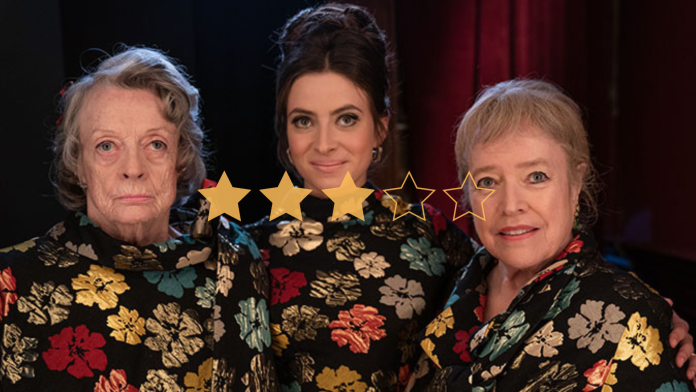Throughout the years, there has been no shortage of films about women travelling together. We’ve had Girls Trip, Joy Ride, even 80 for Brad. Now, The Miracle Club breaks new ground as Eileen (Kathy Bates) leads a group of Catholics on their journey from Dublin to Lourdes.
★★★☆☆
The opening scenes of Thaddeus O’Sullivan’s The Miracle Club showcase Ireland in all its beauty, with stormy, choppy seas and sumptuous green hills that roll for miles. As well as a lush landscape, the Emerald Isle is synonymous with countless cultural symbols, from literature to leprechauns. The Irish are also well-known for their wit, generosity, and wicked humour; as revolutionary socialist James Connolly proclaimed in 1900, “Ireland without her people is nothing to me”. This statement certainly rings true for The Miracle Club, as it puts an ensemble of Dubliners onto the world stage.
Tucked into terrace houses are the film’s leading ladies, who are weighed down by all manner of domestic strife: money worries, health concerns, grief, useless husbands. It’s 1967, and the fierce trio—Eileen Dunne (Kathy Bates), Lily Fox (Maggie Smith), and Dolly Hennessy (Agnes O’Casey)—have their sights set on a pilgrimage to Lourdes. As Irish Catholics, they have their own reasons for visiting the Holy Mary Basilica, eschewing modern medicine in favour of divine intervention. After winning tickets in their church’s talent show, the women embark on their holy expedition. Before the miracles can commence, however, comes a bombshell in the form of Chrissie Ahearn (Laura Linney), the estranged daughter of the recently departed Maureen. Although she never appears on screen, the love and respect held for Maureen is palpable. In stark contrast, Chrissie is a very unwelcome guest. Returning to her hometown after decades in the US, she finds the atmosphere as frosty as the day she left for Boston. However, she decides to join the three friends on the trip to Lourdes, and so begins the journey to reconciliation.
In just 90 minutes, the film excellently fleshes out the main characters—a feat that must be applauded. The women’s previously hidden hopes, dreams, and fears all come to the surface as Eileen, Lily, Dolly, and indeed Chrissie allow themselves to be vulnerable, learning that their friends will be there to catch them.

Left behind are the baffled and bewildered spouses, wonderfully played by Stephen Rea, Niall Buggy, and Mark McKenna. With the three husbands left to fend for themselves while the ladies live it up in Lourdes, their incompetence soon wanes as they get to grips with the famously difficult tasks of cooking and shopping. In what could simply be lighthearted scenes, O’Sullivan quietly and cleverly makes a powerful comment about the burden of invisible labour that plagues so many women. It is safe to say The Miracle Club doesn’t shy away from exploring the expectations that harm generations of women.
For the most part, The Miracle Club is a well-written and directed look at the power of faith and female friendships. However, while the structure of the story is strong, it does at times seem quite rushed. The Miracle Club’s screenplay skilfully handles serious themes of death and reproductive rights but, coming in at just 90 minutes, several elements feel unfinished or underexplored. One example of this is the talent contest, where the three don identical dresses and belt out a number by 60s girl band The Chiffons. As this is such a key event, it feels a shame that the film was not expanded to include the events leading up to it: the decision to enter, the rehearsals, the significance of performing in Maureen’s memory.

You would be forgiven for thinking that The Miracle Club was filmed on location in Lourdes, such is the detail that adorns the shrine. On the whole, the attention to detail is impeccable. However, one stylistic aspect that grates is the characterisation of Dolly. With psychedelic dresses and bright makeup, her outfits tend to border on 60s fancy dress. There is seemingly a fine line between genuine 1960s fashion and parody costumes.
That said, The Miracle Club excels in building a believable world. The town of Ballygar may be fictional, but the people and happenings are all based in reality. From the hallway Holy Water fonts to the second prize in the talent show being a very respectable bacon joint, the film is Irish to the core. Even Kathy Bates’ Dublin accent is convincingly natural, which has previously proven difficult for American actors…
The Verdict
Filmed on location in Dublin and County Wicklow, The Miracle Club is visually beautiful and a real treat for the eyes. With stellar performances and bold themes, this is a charming tale of the importance of friendships and forgiveness. Beyond the sweet exterior of cuddly characters taking a trip to Lourdes is a hard-hitting, emotional film that will make you laugh, cry, and vow to hold your loved ones close.
Words by Tayler Finnegan
The Miracle Club is in cinemas now.
Support The Indiependent
We’re trying to raise £200 a month to help cover our operational costs. This includes our ‘Writer of the Month’ awards, where we recognise the amazing work produced by our contributor team. If you’ve enjoyed reading our site, we’d really appreciate it if you could donate to The Indiependent. Whether you can give £1 or £10, you’d be making a huge difference to our small team.
